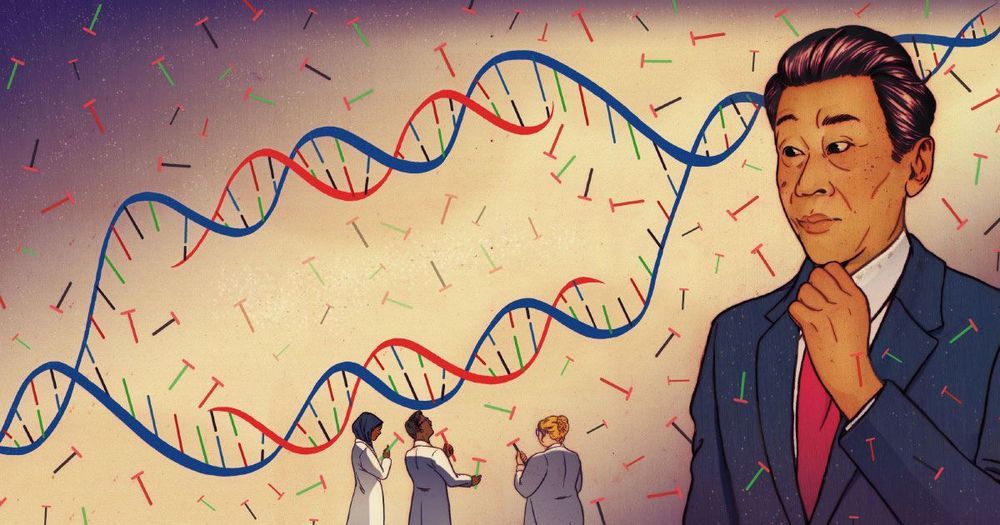Evolution is one of nature’s most impressive forces, allowing organisms to adapt to changing environments to survive. By harnessing and guiding that process scientists have managed to manipulate micro-organisms into producing useful new drugs and materials, but it’s still a time-consuming process. Now, researchers at the University of North Carolina (UNC) have developed a new tool that speeds up the process in mammalian cells, creating new therapeutics in a matter of days.
Category: evolution – Page 139
LMU chemists have discovered an efficient mechanism for the prebiotic synthesis of a vital class of such compounds.
Feldman creates mathematical models that reveal how cultural traditions can affect the evolution of a species.
- By Elizabeth Svoboda, Quanta Magazine on January 12, 2017
A machine that speeds up evolution is revolutionizing genome design and selection of designer microbes.
For 50 years, evolutionary theory has emphasized the importance of neutral mutations over adaptive ones in DNA. Real genomic data challenge that assumption.
Different African killifish species vary extensively in their lifespans—from just a few months to several years. Scientists from the Max Planck Institute for Biology of Ageing in Cologne investigated how different lifespans have evolved in nature and discovered a fundamental mechanism by which detrimental mutations accumulate in the genome causing fish to age fast and become short-lived. In humans, mutations accumulate mainly in the genes that are active in old age.
Few Christians realize the extent to which the evolutionary world view conflicts with the Biblical world view. While many attempt to keep a foot in each camp, acknowledging Christ as Savior yet holding evolution to be a fact of history, Christianity and evolution cannot both be true. Evolution is, at its very essence, an atheistic explanation of the world around us. Not all adherents of evolution are atheists, but certainly the leading proponents of evolution recognize that the concept leaves no room for the workings of God in nature.
Consider the following oft-repeated quote from Sir Julian Huxley, who, until his recent death, was perhaps the world’s leading spokesperson for evolution and who, from his position as head of UNESCO at the United Nations, did much to unite the world under an evolutionary, humanistic banner.
Darwin pointed out that no supernatural designer was needed; since natural selection could account for any known form of life, there was no room for a supernatural agency in its evolution … we can dismiss entirely all ideas of a supernatural overriding mind being responsible for the evolutionary process.[1].
Is artificial consciousness the solution to AI?
Posted in computing, driverless cars, Elon Musk, ethics, evolution, futurism, homo sapiens, human trajectories, information science, law enforcement, machine learning, science, Skynet, supercomputing | 1 Comment on Is artificial consciousness the solution to AI?

Artificial Intelligence (AI) is an emerging field of computer programming that is already changing the way we interact online and in real life, but the term ‘intelligence’ has been poorly defined. Rather than focusing on smarts, researchers should be looking at the implications and viability of artificial consciousness as that’s the real driver behind intelligent decisions.
Consciousness rather than intelligence should be the true measure of AI. At the moment, despite all our efforts, there’s none.
Significant advances have been made in the field of AI over the past decade, in particular with machine learning, but artificial intelligence itself remains elusive. Instead, what we have is artificial serfs—computers with the ability to trawl through billions of interactions and arrive at conclusions, exposing trends and providing recommendations, but they’re blind to any real intelligence. What’s needed is artificial awareness.

Gorilla genome sequenced
Posted in biotech/medical, evolution
The assembly of the gorilla genome was announced today, March 7, by a multi-national group of researchers. The gorilla is the last genus of the living great apes to have its genome decoded. While confirming that our closest relative is the chimpanzee, the team showed that much of the human genome more closely resembles the gorilla than it does the chimpanzee genome.
This is the first time scientists have been able to compare the genomes of all four living great apes: humans, chimpanzees, gorillas and orangutans. This study provides a new perspective on human origins and is an important resource for research into human evolution and biology, as well as for gorilla biology and conservation.
Researchers at the Wellcome Trust Sanger Institute in the United Kingdom lead the study, with contributions from several other institutions, including the University of Washington.








